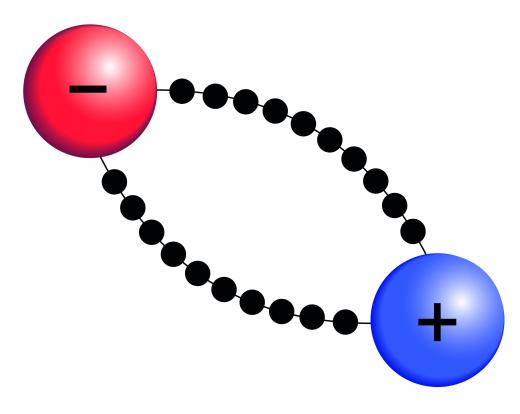The term positive terminal describes which of the two connection terminals on direct current (DC) equipment supplies or is meant to receive a positive electrical charge. DC power supplies always feature a positive to negative electron flow and always have a negative and positive terminal. Most DC appliances or machines also have a positive and negative terminal which should always be connected to terminals of same orientation on the power supply. Failure to do so can cause severe damage to the equipment and power supply. This positive/negative relationship is commonly known as the polarity of a supply or device.
Any source of direct current electrical power flows from a positive source to a negative source. This applies to the DC side of rectified alternating current (AC) power supplies, batteries, and solar panel outputs. Each of these DC power sources feature a positive terminal and a negative terminal. The permanent relationship between positive and negative sides of DC power supplies is referred to as the polarity of the supply. Power supplies and appliances typically include a ground or earthing connection as well; this has nothing to do with the supply of power or the polarity of the device, however.

The universal color code and symbol for a positive terminal is red and a plus (+) sign. The color code and symbol for a negative terminal is black and a minus (-) sign. The polarity relationship, color codes, and symbols for positive and negative terminals are also used on the devices powered by DC power supplies. The connection terminals on DC power supplies and devices will always be marked with one or both of these identifiers. When connecting DC devices to a power supply, it is crucial to observe the correct polarity. In other words, the positive terminals on the supply and device should be connected to each other with the same applying to the negative terminals.
In some cases, reversal of polarity can be used to change the direction of operation for some devices and may be included in the controls as a design feature. Some types of resistive DC appliances such as heaters lack specific polarity requirements and will have no markings on their terminals. Generally, DC devices are polarity specific; failure to observe correct polarity will result in damage to the device and the power supply. This applies to all polarity dependent DC appliances devices including loud speakers, motors, capacitors, and electronic equipment.
